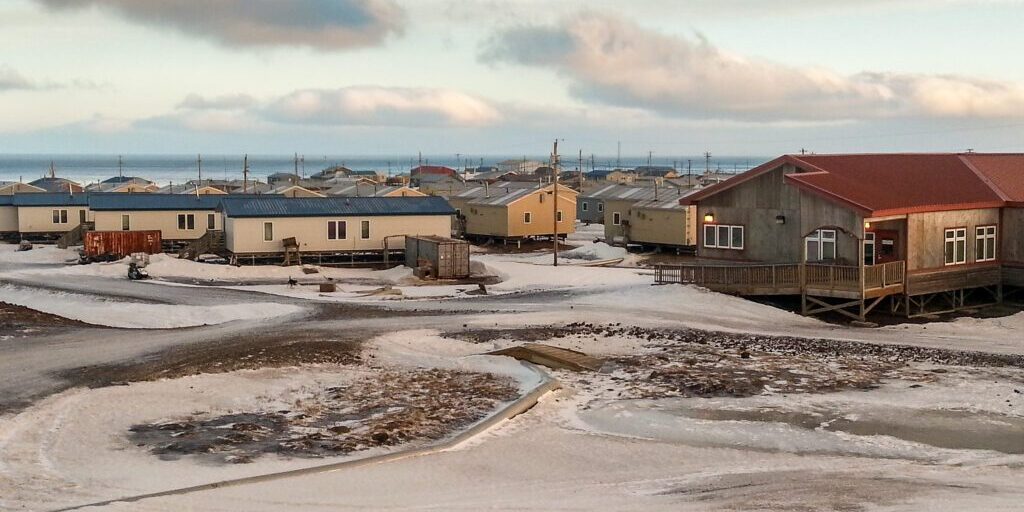Concerns over health issues such as cancer and other diseases have driven researchers and members of the Sivuqaq communities of Savoonga and Gambell to investigate a connection between failing health and environmental contaminants.
Those contaminants come in the form of Persistent Organic Pollutants, or POPs, and toxic metals. Much of the toxic compounds found on St. Lawrence Island and elsewhere in Norton Sound come from abandoned military sites.
As of the end of 2018, approximately $125 million had been authorized and spent by the Department of Defense on contamination cleanup and remediation work at the Northeast Cape, including the prior demolition and offsite disposal of structures and debris, according to the State of Alaska.
Vi Waghiyi, a Savoonga tribal citizen, is the environmental health and justice program director at the Alaska Community Action on Toxics organization, or ACAT.
St. Lawrence Island, Sivuqaq, has been subject to contamination from the abandoned military sites located on the island, built between the 1940s and 1950s, Waghiyi said.
“We were an important strategic location for the military during the Cold War,” Waghiyi said. “We were the eyes and ears of the north because of our proximity to Russia.”
ACAT is currently studying the long-term environmental and health consequences of polyfluoroalkyl substances, or PFAS. The chemicals are used in industrial settings, firefighting foams and food packaging, and they also repel water and oil.
“Persistent Organic Pollutants are chemicals that are highly toxic, and they’re bio-cumulative, so they can bioaccumulate in the food web, and they can cause a range of health problems including endocrine disorders such as thyroid disease, they can harm learning and development,” Pam Miller, the executive director of ACAT, said.
Persistent Organic Pollutants and toxic substances on St. Lawrence Island have led to continuing exposure of the Yupik people to contaminated air, water and especially traditional foods.
The community has expressed concern over possible impacts to subsistence foods, such as reindeer and fish, from the area, according to the State of Alaska.
Miller explained what ACAT has been researching over the past two decades in the Norton Sound region and the larger Arctic area.
“(It’s been) community-based research out here on St. Lawrence Island for about 20 plus years, at the request of the tribes here, to understand the long-term effects of military contamination [and] also the effects of contamination coming into the Arctic from all over the hemisphere,” Miller said.
Waghiyi added that holding the federal government accountable for the contamination of the island has been difficult.
“The burden of proof was put on my people,” Waghiyi said. “It’s been very difficult to hold the military accountable and we partner with our tribes here, the Native Village of Gambell, the Native Village of Savoonga.”
Waghiyi was appointed in 2021 to the Biden Administration’s White House Environmental Justice Advisory Council. The advisory council provides advice and recommendations on how to address current and historic environmental injustices across the United States.
More information can be found on ACAT’s website.
Image at top: Savoonga, Alaska, January 2017. Photo by Davis Hovey, KNOM.




